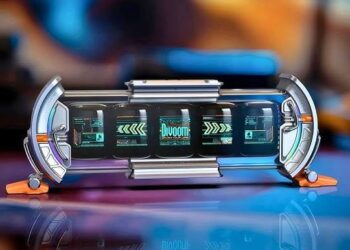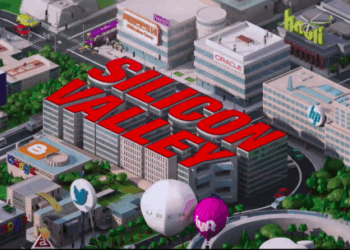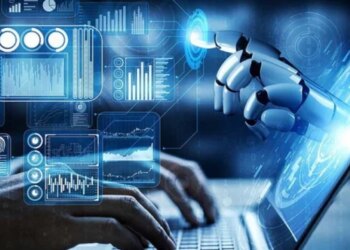The automotive industry is in the throes of its most significant transformation since the invention of the internal combustion engine. The advent of smart cars – vehicles equipped with advanced connectivity, intelligent sensors, and sophisticated computing power – is rapidly paving the way for the ultimate evolution: autonomous driving. This isn’t just about convenience; it’s a paradigm shift promising to redefine transportation, enhance safety, optimize urban planning, and unlock entirely new economic opportunities. This comprehensive article delves into the intricate world of smart cars and their journey towards full autonomy, examining the underlying technologies, the myriad benefits they offer, the formidable challenges they face, and the exhilarating future they promise.
Defining the “Smart” in Modern Automobiles
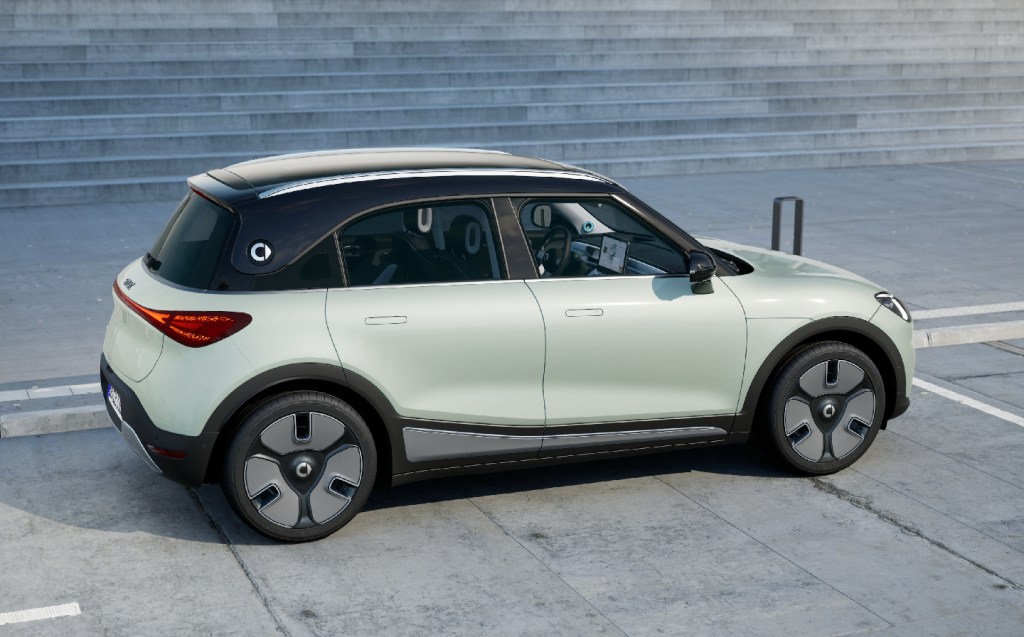
A “smart car” is far more than just a vehicle with a touchscreen. It’s a highly intelligent, connected machine that leverages a complex interplay of hardware and software to enhance the driving experience, safety, and efficiency. The progression towards autonomous driving begins with these “smart” capabilities.
A. Advanced Sensor Systems: These are the “eyes and ears” of the smart car, providing real-time data about the vehicle’s surroundings. Key sensors include:
- Cameras: Provide visual data, detecting lane markings, traffic signs, other vehicles, pedestrians, and potential obstacles. Stereo cameras enable depth perception.
- Radar: Uses radio waves to detect the range, velocity, and angle of objects, performing well in adverse weather conditions. Crucial for adaptive cruise control and collision avoidance.
- Lidar (Light Detection and Ranging): Emits laser pulses to create highly detailed 3D maps of the environment, essential for precise object detection and mapping.
- Ultrasonic Sensors: Short-range sensors used primarily for parking assistance, detecting objects very close to the vehicle.
- Inertial Measurement Units (IMUs): Comprising accelerometers and gyroscopes, these track the car’s motion, orientation, and acceleration.
B. High-Performance Computing Units (ECUs/AI Processors): These are the “brains” of the smart car, processing vast amounts of sensor data in real-time. Modern smart cars utilize specialized AI chips and powerful electronic control units (ECUs) to run complex algorithms for perception, planning, and control.
C. Connectivity (V2X Communication): Smart cars are increasingly connected, allowing them to communicate with various entities:
- V2V (Vehicle-to-Vehicle): Cars communicate directly with each other to share data on speed, braking, and potential hazards, preventing collisions.
- V2I (Vehicle-to-Infrastructure): Cars communicate with road infrastructure (traffic lights, road signs, parking garages) to optimize traffic flow and find parking.
- V2P (Vehicle-to-Pedestrian): Emerging technology for cars to detect and potentially communicate with pedestrians or cyclists (e.g., via smartphone apps or wearable tech).
- V2N (Vehicle-to-Network): Communication with cloud services for navigation updates, remote diagnostics, software updates, and infotainment.
D. GPS and High-Definition (HD) Mapping: Precise localization is crucial. Smart cars use advanced GPS systems combined with highly detailed, frequently updated HD maps that include lane-level information, road geometry, and traffic sign locations, far beyond typical consumer navigation maps.
E. Sophisticated Software and Artificial Intelligence (AI): The true intelligence lies in the software.
- Perception: AI algorithms interpret sensor data to identify objects, understand their movement, and build a real-time model of the environment.
- Prediction: AI predicts the likely behavior of other road users (pedestrians, other vehicles).
- Planning: AI plans the vehicle’s trajectory, speed, and maneuvers based on the perceived environment and predictions.
- Control: AI executes the planned maneuvers, controlling steering, acceleration, and braking.
- Machine Learning: Algorithms continuously learn from driving data, improving performance over time.
Levels of Driving Automation
The Society of Automotive Engineers (SAE International) defines six levels of driving automation, from no automation to full autonomy:
A. Level 0: No Automation: The human driver does everything.
B. Level 1: Driver Assistance: The vehicle has either steering or acceleration/braking support (e.g., adaptive cruise control or lane keeping assist). The human driver is solely responsible for monitoring the driving environment.
C. Level 2: Partial Automation: The vehicle can provide both steering and acceleration/braking support simultaneously (e.g., advanced adaptive cruise control with lane centering). The human driver must remain engaged and monitor the driving environment at all times, ready to take over. This is the highest level of automation available in most consumer vehicles today.
D. Level 3: Conditional Automation: The vehicle can perform all driving tasks under specific conditions (e.g., on highways below a certain speed). The human driver does not need to constantly monitor the environment but must be ready to intervene when prompted by the system. This is a crucial distinction as the driver can disengage from the driving task.
E. Level 4: High Automation: The vehicle can perform all driving tasks and monitor the driving environment under specific conditions (e.g., in a defined geofenced area, like a specific city or highway segment). The human driver is not required to take over even if they don’t respond to a handover request. If conditions exceed system capability, the vehicle will safely pull over.
F. Level 5: Full Automation: The vehicle can perform all driving tasks under all conditions, equivalent to a human driver. No human intervention is required at any time, and the vehicle can operate without a steering wheel or pedals.
Core Applications and Features of Smart Cars
The intelligence within modern vehicles translates into a wealth of features that enhance every aspect of the driving and ownership experience.
Advanced Driver-Assistance Systems (ADAS)
These are the building blocks of autonomy, providing vital safety and convenience features.
- Adaptive Cruise Control (ACC): Automatically adjusts vehicle speed to maintain a safe distance from the car ahead.
- Lane Keeping Assist (LKA) / Lane Centering: Helps keep the vehicle within its lane markings.
- Automatic Emergency Braking (AEB): Detects potential frontal collisions with vehicles, pedestrians, or cyclists and applies the brakes if the driver doesn’t react.
- Blind Spot Monitoring (BSM): Alerts the driver to vehicles in their blind spots.
- Rear Cross-Traffic Alert: Warns of vehicles approaching from the side when backing out of a parking space.
- Parking Assist (Semi-Autonomous Parking): Steers the vehicle into a parking spot while the driver controls acceleration and braking.
- Traffic Jam Assist: Combines ACC and LKA to provide automated driving in stop-and-go traffic.
Infotainment and Connectivity
Modern smart cars are digital hubs on wheels.
- Large Touchscreen Displays: Centralize controls for navigation, audio, climate, and vehicle settings.
- Voice Control and Digital Assistants: Allow for hands-free control of vehicle functions and access to information (e.g., “Hey Google, navigate home”).
- Smartphone Integration: Apple CarPlay and Android Auto seamlessly mirror smartphone functionality onto the car’s display.
- Over-the-Air (OTA) Updates: Allows for software updates, feature enhancements, and bug fixes to be delivered wirelessly, much like a smartphone.
- In-Car Wi-Fi Hotspots: Provide internet access for all passengers and connected devices.
Vehicle Health and Performance Monitoring
Smart cars are constantly self-assessing.
- Predictive Maintenance: Sensors and AI algorithms monitor engine performance, tire pressure, battery health, and other components, predicting when maintenance is needed before a breakdown occurs.
- Remote Diagnostics: Dealers or manufacturers can remotely access vehicle data to diagnose issues, potentially saving a trip to the service center.
- Fuel/Energy Efficiency Optimization: AI can provide driving tips, optimize gear shifts, or manage hybrid/electric powertrains for maximum efficiency.
Personalization and User Experience
Smart cars learn driver preferences.
- Driver Profiles: Store personalized settings for seat position, mirror angles, climate control, infotainment preferences, and even driving modes for multiple users.
- Biometric Authentication: Some vehicles use facial recognition or fingerprint scanners to identify the driver and automatically load their profile.
- Personalized Routing: Navigation systems learn preferred routes based on time of day, traffic patterns, and personal preferences.
The Transformative Benefits of Smart and Autonomous Cars
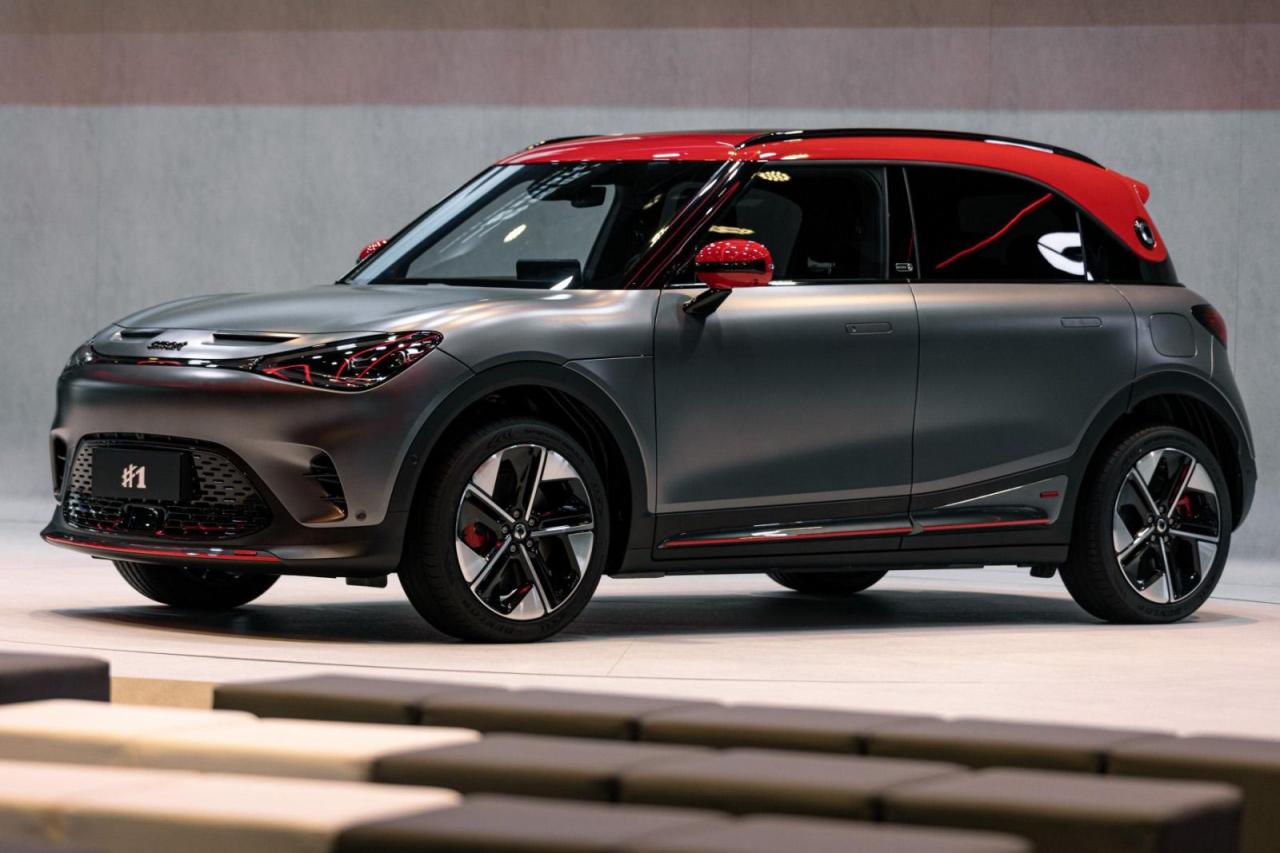
The widespread adoption of intelligent vehicles promises to revolutionize more than just individual commutes; it stands to reshape urban landscapes and societal structures.
A. Significant Safety Improvements:
- Reduced Human Error: Over 90% of traffic accidents are caused by human error. Autonomous systems, with their 360-degree awareness and faster reaction times, can dramatically reduce collisions, injuries, and fatalities.
- Elimination of Impaired Driving: Drunk, distracted, or drowsy driving would become non-issues with fully autonomous vehicles.
- Enhanced Visibility and Awareness: Sensors can “see” in adverse weather, around corners, and in blind spots more effectively than human eyes.
B. Increased Traffic Efficiency and Reduced Congestion:
- Optimized Traffic Flow: Autonomous vehicles can communicate and coordinate their movements, leading to smoother traffic flow, less braking, and fewer stop-and-go situations.
- Higher Road Capacity: Vehicles can drive closer together more safely, effectively increasing the capacity of existing roads without building new infrastructure.
- Smarter Routing: AI-powered navigation can dynamically reroute vehicles to avoid congestion in real-time.
C. Environmental Benefits:
- Reduced Emissions: Smoother traffic flow, optimized acceleration/braking, and potentially higher adoption of electric autonomous vehicles will lead to significant reductions in greenhouse gas emissions and air pollution.
- Energy Efficiency: Autonomous driving systems can optimize routes and driving styles for maximum fuel or battery efficiency.
D. Economic Opportunities and Productivity Gains:
- New Business Models: The rise of autonomous ride-sharing fleets will create new transportation services, potentially reducing the need for private vehicle ownership.
- Increased Productivity: Commuters can reclaim lost time during their drives, using it for work, relaxation, or entertainment. This could add billions to global economies.
- Lower Insurance Premiums: As accident rates plummet, insurance costs are expected to decrease significantly.
- Optimized Logistics: Autonomous trucks and delivery vehicles will revolutionize freight and last-mile delivery, leading to more efficient supply chains.
E. Enhanced Accessibility and Mobility:
- Mobility for All: Autonomous vehicles can provide independent mobility for the elderly, individuals with disabilities, and those too young to drive, dramatically improving their quality of life and access to services.
- Reduced Parking Needs: With fleets of self-parking or continuously circulating autonomous vehicles, cities could repurpose vast parking lots into green spaces or housing.
F. Urban Planning Transformation:
- Redesigned Cities: Less need for parking, reduced congestion, and safer streets could lead to urban environments designed more for people and less for cars.
- Efficient Land Use: Reclaiming land currently used for parking or wide roads opens up possibilities for new urban developments.
Navigating the Challenges of Autonomous Drive
Despite the revolutionary potential, the road to widespread autonomous driving is fraught with complex technical, regulatory, ethical, and societal challenges.
A. Safety and Reliability:
- Near-Perfection Requirement: Autonomous vehicles must be orders of magnitude safer than human drivers to gain public trust. Even rare accidents can have catastrophic public and regulatory consequences.
- Edge Cases: Handling unpredictable “edge cases” (unforeseen scenarios like unusual road debris, erratic human behavior, or novel weather phenomena) remains a significant challenge for AI.
- Sensor Limitations: Sensors can be impacted by extreme weather (heavy snow, fog), bright sunlight, or heavy rain, potentially impairing the system’s ability to “see.”
B. Regulatory and Legal Frameworks:
- Varying Laws: Laws regarding autonomous vehicle testing and deployment vary significantly by region, state, and country, creating a complex patchwork.
- Liability in Accidents: Determining liability in an accident involving an autonomous vehicle (e.g., driver, manufacturer, software developer, sensor provider) is a complex legal question that needs clear resolution.
- Certification and Testing: Establishing robust, standardized testing and certification processes for autonomous vehicle safety is crucial.
C. Ethical Dilemmas:
- The “Trolley Problem”: In an unavoidable crash scenario, how should an autonomous vehicle be programmed to prioritize (e.g., minimizing harm to occupants vs. pedestrians)? These are complex ethical decisions.
- Moral Responsibility: Who is morally responsible when an autonomous vehicle makes a life-or-death decision?
- Fairness and Bias: Ensuring AI algorithms are free from biases that could disproportionately affect certain groups of people.
D. Cybersecurity Risks:
- Vulnerability to Hacking: As highly connected computers on wheels, autonomous vehicles are prime targets for cyberattacks. A successful hack could lead to vehicle hijacking, data theft, or even mass disruption of transportation networks.
- Over-the-Air Update Security: Securing the channels for OTA updates is critical to prevent malicious code injection.
E. Public Acceptance and Trust:
- Fear of the Unknown: Many people are hesitant to trust a machine to drive, fueled by media portrayals of accidents or a general distrust of AI.
- Job Displacement: The rise of autonomous trucking and ride-sharing could lead to significant job losses for professional drivers, requiring societal adjustments and retraining programs.
- Human-Machine Interaction: How will human drivers or passengers interact with an autonomous system that takes over control? Clear communication and intuitive interfaces are vital.
F. Infrastructure Requirements:
- HD Mapping Updates: Maintaining and constantly updating high-definition maps for an entire road network is a monumental task.
- V2I Integration: Requires significant investment in smart road infrastructure (smart traffic lights, roadside sensors) to enable seamless V2I communication.
- Connectivity Demands: Widespread 5G or even 6G networks will be essential for real-time data exchange and cloud processing.
G. Technological Complexity and Cost:
- Immense Processing Power: Autonomous driving requires staggering computational power, pushing the limits of current hardware.
- Cost of Sensors: High-resolution Lidar and advanced radar systems are expensive, contributing to the high cost of autonomous vehicles.
- Complexity of Software: Developing robust, bug-free AI software capable of handling infinite real-world scenarios is an extraordinarily complex engineering challenge.
The Future of Autonomous Drive
The evolution of smart cars towards full autonomy is not a matter of if, but when and how. The future will likely see a gradual, phased rollout, starting with more defined operational design domains (ODDs) like highways or specific geofenced areas.
A. Ubiquitous Advanced ADAS: Even before full autonomy, Level 2 and Level 3 features will become standard in most new vehicles, dramatically improving everyday driving safety and convenience.
B. Expansion of Geofenced Autonomous Zones: We’ll see autonomous ride-hailing services expand in well-mapped and regulated urban areas, offering convenient, self-driving transportation.
C. Autonomous Commercial Fleets: Trucking, last-mile delivery, and public transit will be among the first sectors to widely adopt autonomous vehicles due to their predictable routes and economic incentives.
D. Enhanced Human-Machine Collaboration: The focus will shift to seamless collaboration between the human driver and the AI, with intuitive handovers and clear communication about system capabilities and limitations.
E. Integration with Smart City Infrastructure: Autonomous vehicles will become integral components of smart city ecosystems, optimizing traffic flow, managing parking, and even supporting emergency services in unprecedented ways.
F. New Interior Designs: As the need for human driving diminishes, car interiors will be reimagined as mobile living spaces, offices, or entertainment hubs, prioritizing comfort, connectivity, and versatility.
G. Personalized Mobility Services: Rather than owning a car, people might subscribe to highly personalized autonomous mobility services that offer different types of vehicles on demand, tailored to their specific needs for a given journey.
Conclusion
The journey to full autonomous driving is a marathon, not a sprint. It requires continuous innovation, rigorous testing, robust regulatory frameworks, and broad public acceptance. However, the potential rewards – a world with vastly fewer accidents, less congestion, cleaner air, and unprecedented mobility for all – make it a future well worth pursuing. Smart cars are not just changing how we drive; they are fundamentally transforming how we live, work, and interact with our cities.



